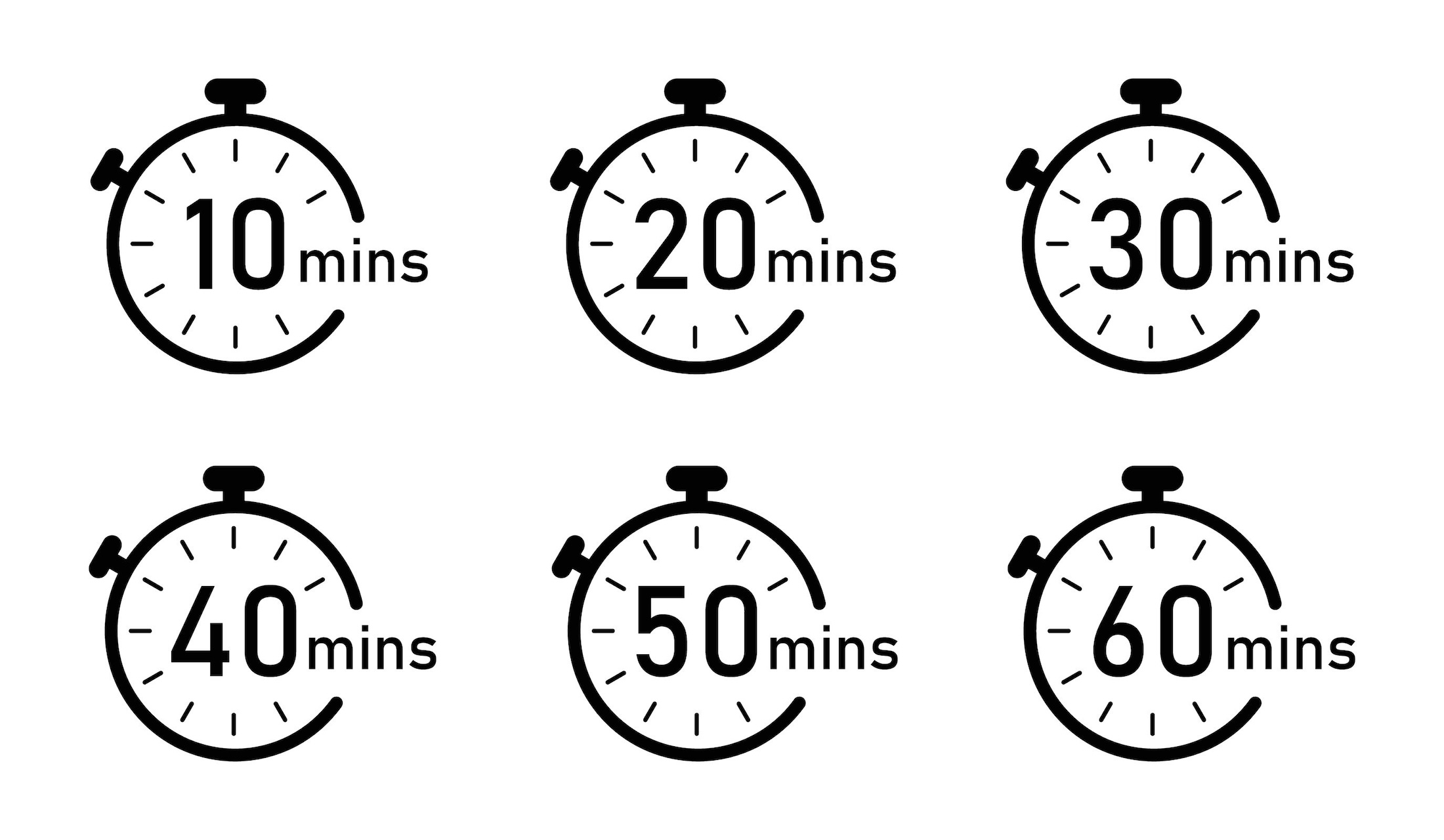Dec 13, 2023
Determining the ideal length for a presentation can be tricky. It depends on the complexity of the topic, the sophistication of the audience and your own public speaking skills. Keeping It Short & Simple (K.I.S.S.) is a universal technique to increase the impact of any presentation.
The 10/20/30 Rule
Making a presentation shorter is easier said than done. It’s much harder to cut a slide than to add more content. The 10/20/30 rule of PowerPoint presentations, popularized by Guy Kawasaki, is a useful guideline for creating effective and concise presentations, especially in corporate settings.
The 10/20/30 rule states that an ideal presentation should:
- have no more than 10 slides
- last no longer than 20 minutes
- use font sizes no smaller than 30 pts
The Case for Brevity
While the goal of communication is to be understood, the goal of presentations is to convince your audience and make them take action. You risk losing your audience if you go on too long. If that happens, they will be less likely to act.
Whether or not you believe that adults, “now have shorter attentions spans than goldfish,” – a claim debunked by researchers at King’s College London – it is impossible to ignore that people everywhere seem to be suffering from attention deficit and information overload. TED Talks, which include some of the best examples of high-impact presentations, are limited to 18 minutes. In this Ted Talk, Niro Sivanathan demonstrates how increasing the number of arguments does not strengthen your overall case due to the dilution effect. By including weaker or less relevant points, you reduce the impact of your argument.
Q&A is Still the Presentation
When evaluating your presentation, ask yourself whether you have addressed all reasonable audience expectations and likely questions. Even when you have done so, always allow time for Q&A at the end. No one could blame you if the audience doesn’t ask questions; however, you must be seen to welcome the opportunity. Audience Q&A is a must-have, not just a nice-to-have. The most persuasive form of oral communication remains dialogue, not monologue. Don’t think of a presentation as a speech. Think of it as opening a discussion. This slight change in your initial approach can have a massive impact on the overall audience perception and buy-in.
When timing your presentation, think of the sequence as a whole: your introductory presentation + discussion time. The presentation is not separate from Q&A. Audience interaction serves your overall purpose better than the presentation alone. To paraphrase the 18th century German strategist Carl von Clausewitz who famously stated that, “War is the continuation of diplomacy by other means,” I would say, “Q&A is the continuation of presentation by other means.” I have written before about not being afraid of a Q&A session. View audience interaction as an opportunity to shine and to reinforce your message.
Here’s a checklist for determining the ideal length of your presentation:
- Define the purpose: The ideal length of a presentation depends on its purpose. Who are you trying to convince, and of what? The purpose will dictate the level of detail and the appropriate length of the presentation. You’ll need a shorter, punchier delivery for a sales pitch, while a training session may require more time to cover in-depth material.
- Assess complexity: What is the audience’s level of expertise or familiarity with the topic? A straightforward concept or quick business update may require only a brief presentation. A more complex topic may require a longer presentation to ensure understanding. Executives and decision-makers often have many demands on their time and appreciate concise presentations, while technical experts may be eager for in-depth information.
- Get feedback before & after: While working on your draft, ask a few trusted contacts for their reactions. On the day of the presentation, try to collect additional insights from the audience, to gauge whether your timing was appropriate for the content. This feedback will be invaluable when creating your next presentation.
By striking the right balance between brevity and relevance, your presentation will capture your audience and leave a lasting impression.





